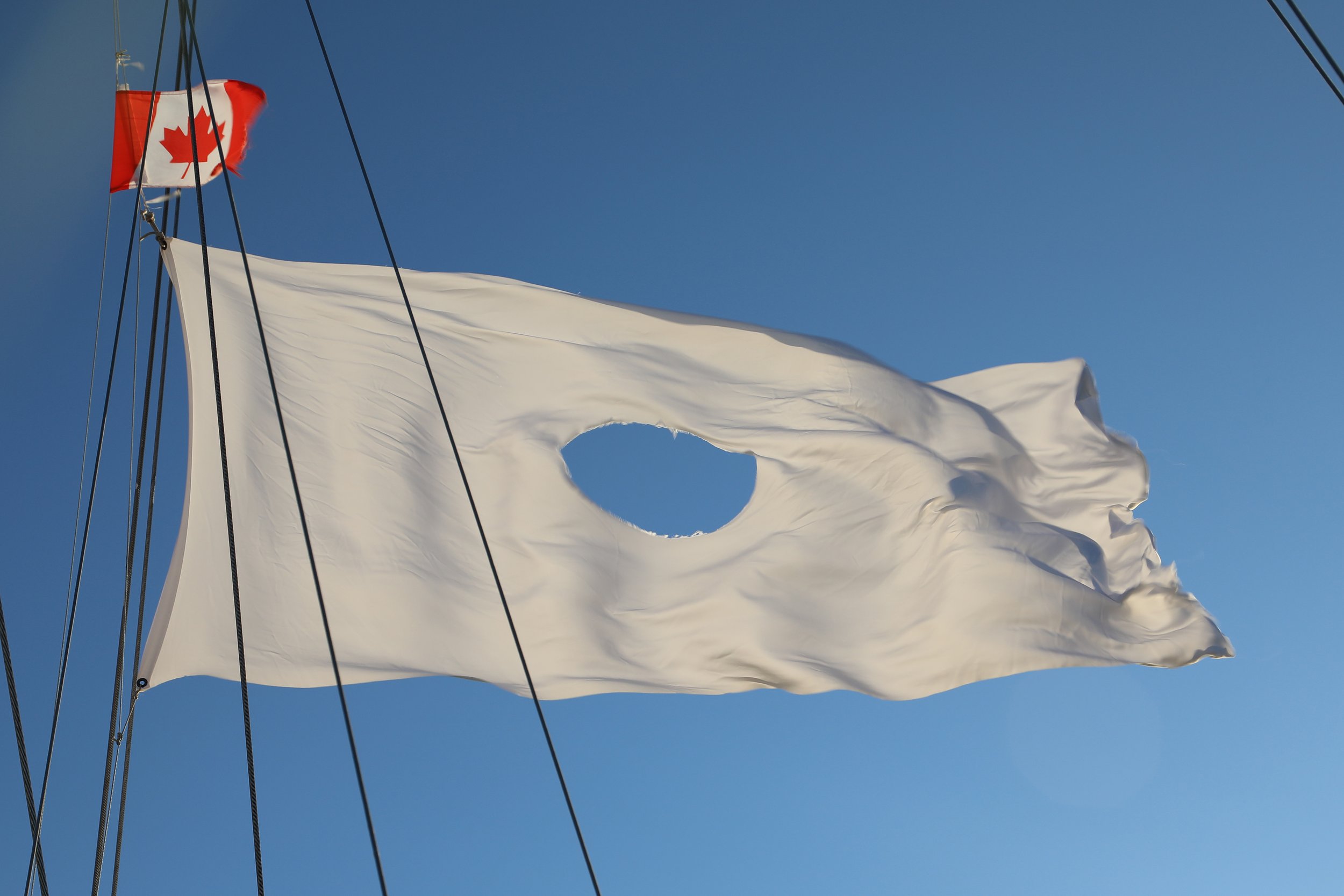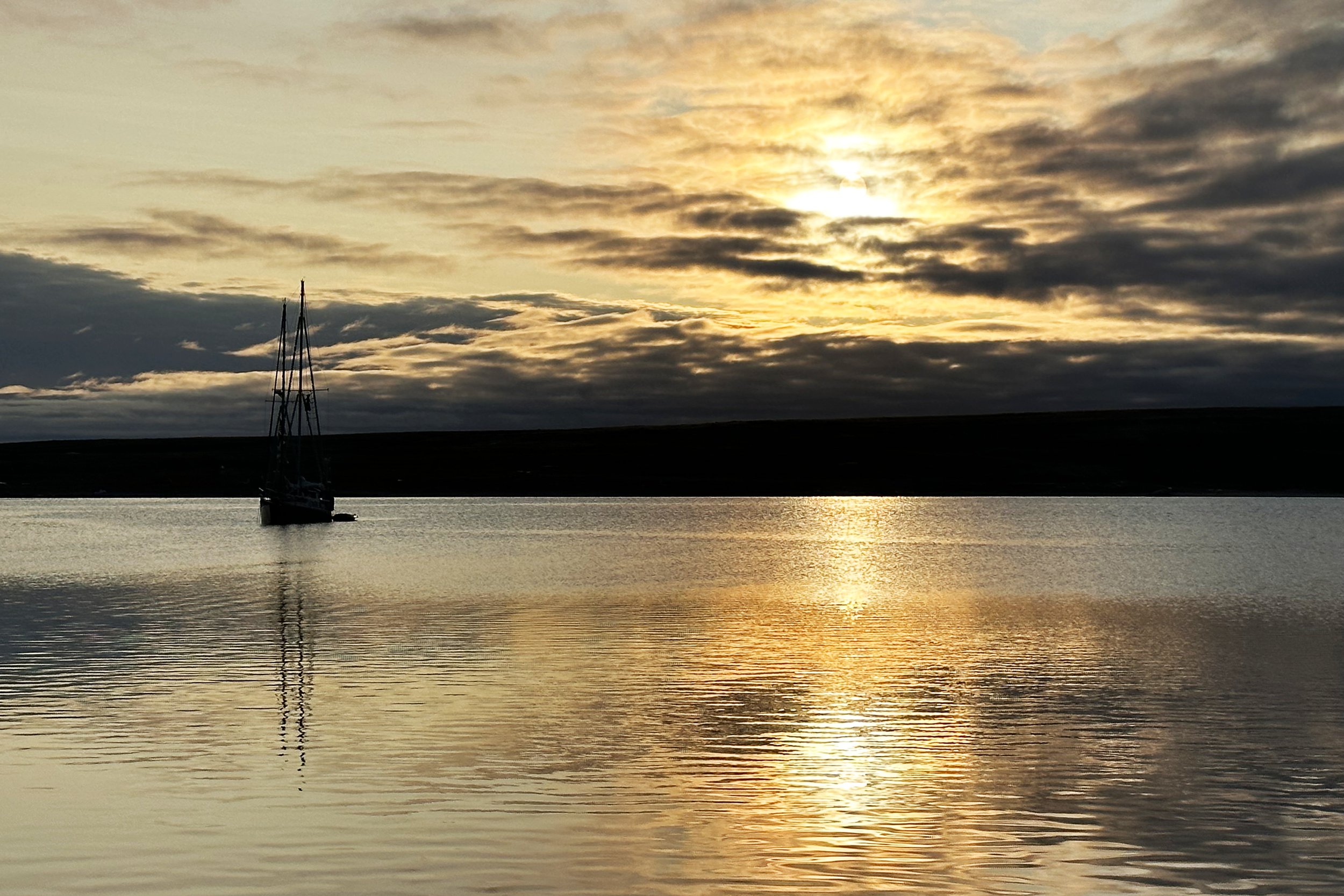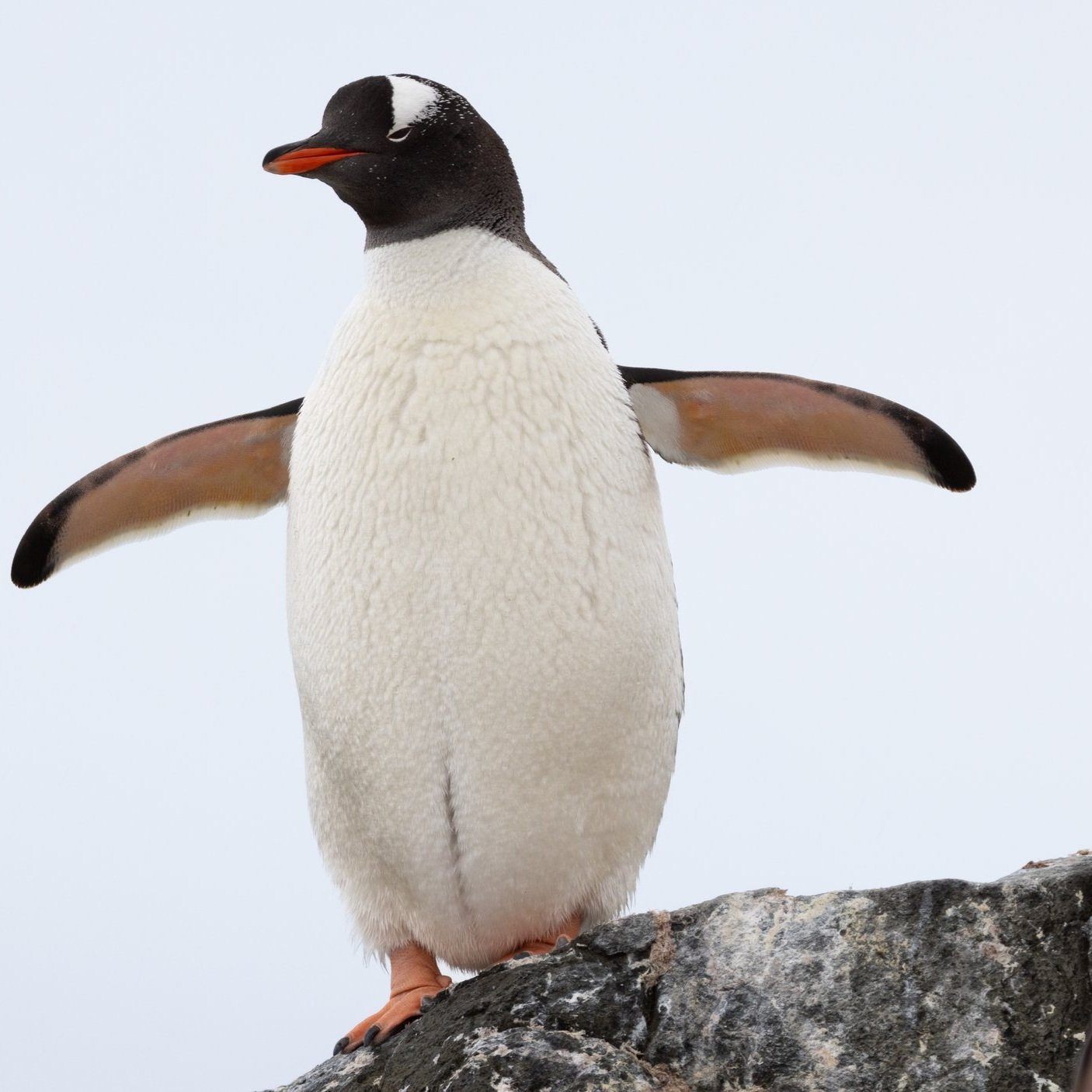This Quarter at Trebek
Issue #3
| March 21, 2025

TREBEK TRACKS
THE ICE
IN THIS ISSUE:
As Canada’s ice disappears, it reshapes ecosystems, water sources, and climate stability. The Trebek Initiative supports those working to document these changes and uncover solutions to adapt to a warming climate—and the melting ice.
This issue explores the hidden world of ice—from microscopic algae beneath frozen lakes to Arctic ice shelves collapsing in real time—revealing what’s at stake and discovering solutions to adapt.
COMPLETED PROJECT STORIES: Explore our latest project pages: Christian Stenner’s expedition into Canada’s active volcano reveals hidden geothermal landscapes. Jessica Houston’s journey sailing the North West Passage - shares the untold stories of some amazing women who shaped the Arctic.
NEW 2025 PROJECTS ANNOUNCED APRIL 4: From 67 exceptional submissions, 41 projects were shortlisted, and 15 advanced to peer review. Led by National Geographic and Canadian Geographic, Trebek’s thorough evaluation process ensures the most impactful projects are selected. Final funding decisions will be announced on April 4, 2025.
TREBEK TRACKS THE ICE: Trebek Grantees are revealing the cascading effects of ice loss across Canada. Andrew Budziak expands his research on algae under the ice, Anna Crawford maps the rapid collapse of Arctic ice shelves, and Kasia Staniszewska uncovers how thawing permafrost releases long-buried pollutants into freshwater systems.
ACTIVE PROJECTS: Tracking St. Lawrence Belugas from Two Perspectives Trebek funded two projects to protect St. Lawrence Belugas from growing threats. Camille Martel studies how ice impacts migration, while Victoria Lean examines how ocean noise disrupts communication. Together, they reveal the challenges—and how to protect belugas.
UPCOMING EVENTS: Don’t miss the chance to engage directly with National Geographic through a series of exciting events across Canada, offering unique opportunities to connect with explorers and discover the impactful work being done.
WHERE IS TREBEK ACTIVE? Since 2021, Trebek has supported 39 projects—20 completed, 19 ongoing—with Trebek Grantees working across all regions of Canada - on projects related to Land, Water, Wildlife and History & Culture.

TREBEK TRACKS THE ICE
Revealing the Hidden World Beneath the Ice
These projects reveal the cascading effects of ice loss—from microscopic algae beneath frozen lakes to crumbling ice shelves and pollutants entering Arctic waterways. Each discovery deepens our understanding of the challenges—and the solutions.
By blending research with compelling storytelling, Trebek Grantees ensure these changes don’t go unnoticed. Their work drives awareness, informs action, and shapes conservation plans.
Andrew Budziak:
Scaling Discovery: Unlocking the Secrets of Under-Ice Ecosystems
Andrew Budziak's 2023 Trebk project revealed a hidden ecosystem beneath our frozen lakes—under-ice algae that thrive in extreme winter conditions— but remains largely unstudied.
His latest expedition, overcoming brutal conditions, collected 33 samples from three dive sites—advancing our understanding of their role in freshwater ecosystems.
These samples are now being analyzed across North America and cryo-banked at the Canadian Museum of Nature for future study.
🔗 Explore Andrew’s Latest Project: Under The Ice - 2025 Expedition Report
2023 Trebek Grantee
Andrew Budziak
Anna Crawford
The Last Ice Shelf
Canada’s Arctic ice shelves, once stable for centuries, are disappearing at an alarming rate. Anna Crawford’s research captures this change in real-time, using 3D modelling to map the rapid collapse of the Milne Ice Shelf.
Her latest findings show how fractures spread through the ice, revealing the forces driving its disintegration. These insights help predict future ice loss, rising sea levels, and the ripple effects on Arctic and global ecosystems.
🔗 Learn about Anna Crawford’s research: Using 3D Models to Study Ice Shelf Loss
2022 Trebek Grantee
Anna Crawford
Kasia Staniszewska
Uncovering Long-Buried Pollutants in the Melting Arctic
As Arctic glaciers melt and permafrost thaw, centuries-old pollutants are seeping into freshwater systems at alarming rates.
Kasia Staniszewska’s research tracks how mercury and other organic pollutants spread, posing risks to fish, wildlife, and northern communities. Her latest findings reveal that glacial meltwater carries higher contaminant loads than previously believed, dispersing them rapidly through Arctic rivers.
By mapping these pollution pathways, she identifies risks and shapes strategies to safeguard our fragile northern ecosystems.
🎥 Watch Kasia discuss her research in this Canadian Geographic video: Meet Kasia
Kasia Staniszewska
2022 Trebek Grantee
At the Trebek Initiative, our project pages do more than document discoveries—they take audiences behind the scenes, offering a rare look at how research unfolds in real time and why it matters. Through immersive storytelling, stunning visuals, and firsthand accounts from the field, we bring the science, challenges, and breakthroughs to life.
COMPLETED PROJECT STORIES
2021 Trebek Grantee
Christian Stenner
Beneath Mount Meager’s glaciers lies Canada’s only active volcanic cave system—where fire and ice collide in an extreme, unexplored world. Christian Stenner’s expedition has revealed rare microbial life, striking geothermal formations, and insights into how life might survive in harsh environments beyond Earth.
"Mount Meager is a living, breathing landscape where fire and ice collide. Each time we enter, the caves have changed—reshaped by geothermal forces beneath the glacier."
These caves, much like those on Mars or Europa, offer a glimpse into alien-like ecosystems right here on our planet.
📖 Explore the discoveries and the link to NASA space exploration: View Project Page- Inside Canada’s Only Active Volcano
Inside Canada’s Only Active Volcanic Caves
Journey Into Canada’s Active Volcano
2023 Trebek Grantee
Jessica Houston
Beyond Her Horizons
Colonial male explorers have long defined the Arctic—but the real story is far richer. Behind every expedition were women whose knowledge, craftsmanship, and endurance made survival possible. They were seamstresses who stitched life-saving caribou parkas, navigators who guided ice-laden waters, and community leaders who sustained Arctic life for generations.
Yet, their contributions have often been overlooked, hidden beneath the dominant narratives of discovery.
Jessica Houston’s journey—sailing across the Northwest Passage—set out to change that. Alongside her was Okalik Eegeesiak, an Inuit leader and former chair of the Inuit Circumpolar Council, whose deep knowledge and perspective helped shape the journey.
"The Arctic is layered with stories, many of them untold. Through this project, we are shifting the lens to highlight the women—past and present—who have shaped and sustained life in the North."
Her project, told through striking visuals and personal narratives, brings these voices to the forefront.
📖 Follow the journey, explore the images, and watch the film: View Project Page - Beyond Her Horizons

The rugged cliffs of Bellot Strait rise dramatically from the icy waters, creating a breathtaking and formidable landscape. Long before European explorers arrived, Inuit were familiar with the region and likely knew of the strait, though it wasn't part of regular routes due to its challenging conditions

A Bowhead whale spotted between Pond Inlet and Gjoa Haven gracefully dips its tail into the frigid Arctic waters. The history of exploration is intertwined with that of commercial whaling, which almost led to the extinction of whales. Inuit knowledge of hunting comes from a very different mindset – that of appreciation and of using all parts of the whale, drawing upon traditions that are thousands of years old.

Sailing through the narrow and treacherous waters of Bellot Strait, a key but challenging passage in the Northwest Passage. Bellot Strait, located at the northern tip of the Boothia Peninsula, is known for its strong currents, unpredictable ice conditions, and narrow width, making it a daring route for adventurers and explorers alike.

Serene and ethereal, floating ice in Regent Inlet reflects the tranquil yet harsh Arctic environment. These ice formations, sculpted by nature, drift silently in the frigid waters, embodying the delicate balance of the polar ecosystem. Ice plays such a primary role in exploration narratives, often portrayed as an enemy to be conquered. It has always had—and continues to have—a crucial role in the life of Inuit today, as Sheila Watt Cloutier advocates when she speaks about Inuit rights to the cold. Climate change is affecting the polar regions at twice the rate as in the rest of the world, yet is caused by activities in the south.

Sailing through the serene waters of Regent Inlet on a calm, sunny day, the ship's prow glides effortlessly through the gentle waves. The clear skies and tranquil sea highlight the beauty and peacefulness of the northern wilderness.

Flying the white 'O' flag with a circular cutout opens a window to the sky and the horizon. It is a flag without a nation, symbolising a kind of exploration that prioritises the interconnection between people and place, not the exploitation of resources to be discovered. Throughout the voyage, Okalik and Jessica carried out a series of ephemeral, anti-heroic actions to question dominant exploration narratives and to signal a journey based on a different value system.

They were greeted by a stunning midnight sunset as they arrived in Gjoa Haven. After sailing 1,000 kilometers from Pond Inlet, this golden view, captured around midnight on August 18, showcases the Arctic's prolonged twilight during late summer, where the sun barely dips below the horizon, creating a serene atmosphere.

This stunning red sky captured before midnight is a breathtaking sight in Gjoa Haven. The sky remains vibrant with twilight colours due to the Arctic's prolonged daylight during late summer. This serene view overlooks the waters of Gjoa Haven's harbour and the nearby beach structures, reflecting everyday life of the local community.
The Trebek Initiative takes a multi-angle approach to beluga conservation by funding two unique projects supporting the St. Lawrence whale population. Together, these projects reveal the growing pressures on belugas—and the insights needed to protect their future.
ACTIVE PROJECTS
Tracking St. Lawrence Belugas from Two Perspectives
2023 Trebek Grantee
Camille Martel
Beluga whales have long navigated the icy waters of the St. Lawrence, yet little is known about their movements in the harshest months of the year. Camille Martel leads the first-ever winter study of St. Lawrence belugas, investigating how ice cover and extreme cold shape their migration, feeding, and survival.
Her team uses aerial surveys and acoustic monitoring to gather critical data on how these whales interact with their frozen environment.
Studying Beluga Migration in Extreme Conditions
2023 Trebek Grantee
Victoria Lean
Sonic Seas: Investigating the Impact of Noise Pollution on Beluga
The Arctic is getting louder; for belugas, survival depends on sound. These highly vocal whales rely on echolocation to navigate, find food, and communicate, but industrial noise pollution from shipping, construction, and resource extraction disrupts their ability to thrive.
Victoria Lean’s research uses acoustic monitoring and scientific analysis to capture the rising noise levels in beluga habitats - highlighting how these changes affect their behaviours, stress levels, and long-term survival.
WHERE IS TREBEK ACTIVE?
Since 2021, Trebek has supported 39 projects—20 completed, 19 ongoing—funding Canadian researchers, scientists, conservationists, and storytellers across four key focus areas: Land, Water, Wildlife, and History & Culture.
🔽 Scroll below to locate and explore all 39 Trebek-supported projects across Canada.
We publish This Quarter at Trebek to showcase the groundbreaking work of our Trebek Grantees and connect their discoveries with our network of partners, supporters, and the wider public.
These stories highlight Canada's biggest environmental, cultural, and historical challenges—from scientific breakthroughs to efforts that preserve our landscapes, wildlife, and heritage.
🔽 Catch up on our past issues:
IN CASE YOU MISSED IT
UPCOMING EVENTS
Don’t miss the chance to engage directly with National Geographic through a series of exciting events across Canada, offering unique opportunities to connect with explorers and discover the impactful work being done.
Apr 2, 2025 - Vancouver, BC
NG Live - Jess Cramp: The Untold Story of Sharks
Sharks, ancient mariners predating the dinosaurs, have evolved into over 500 remarkable species. Yet, only now are we uncovering their secrets—and the human impact threatening their survival.
Join Dr. Jess Cramp as she dives into National Geographic archives to spotlight trailblazing women who pioneered shark science and storytelling. Then, follow her to the vibrant waters of the South Pacific for a firsthand look at her cutting-edge research and conservation efforts to secure a future for these ocean predators.
Apr 13 - 15, 2025 - Toronto, ON
NG Live - Heather Lynch: Penguins of Antarctica
Antarctica’s name alone conjures imagery of the harshest environment on Earth, but it is more than its monochromatic colour scheme of snow and ice.
Meet the many species of penguins that waddle and swim through the freezing water, along with an abundance of other life, on a journey south with quantitative ecologist Dr. Heather Lynch.
Apr 27 - 28, 2025 - Calgary, AB
NG Live - Doug Smith: Wild Wolves of Yellowstone
Yellowstone National Park’s vast two million acres of wilderness hold a remarkable story of wildlife conservation. In the 1990s, biologist Doug Smith led the reintroduction of gray wolves into the park, transforming its ecosystem.
Explore the behind-the-scenes efforts—featuring rare photos and footage—that restored balance to Yellowstone and sparked extraordinary ecological changes.
May 25 - 26, 2025 - Calgary, AB
NG Live - Kakani Katija: Designed by Nature
The midwaters of the ocean are one of the least-explored ecosystems on Earth, but its inhabitants have inspired all kinds of technologies. The work of bioengineer Dr. Kakani Katija has led to jellyfish-inspired robotics and more.
Come on a dive into the midwaters of the ocean— one of the least-explored ecosystems on Earth—to discover sea creatures with the potential to make big impacts on some of the world’s most critical problems
June 1 - 3, 2025 - Toronto, ON
NG Live - Tracy Drain: Cosmic Adventures
Discover the marvels of our cosmic backyard through the eyes of the robotic spacecraft sent out to explore it.
Aerospace engineer Tracy Drain works at NASA’s Jet Propulsion Laboratory to develop, test, and operate the complex machines that uncover some of the countless mysteries within and beyond our solar system.
Follow @trebekinitiative on Instagram
For more inspiring stories and discoveries from our Trebek Initiative Grantees.
Stay informed about groundbreaking projects led by Trebek Grantees and follow their journey of exploration, innovation, and hope—shedding light on and celebrating Canada’s rich natural and cultural heritage.
THANK YOU
Your commitment fuels our Trebek Grantees’ efforts to make a meaningful impact across Canada —whether they’re discovering solutions to our shared challenges, preserving Canada’s cultural treasures, or inspiring the next generation of scientists, storytellers, and educators.
Together, we’re igniting a passion to preserve across Canada.
























